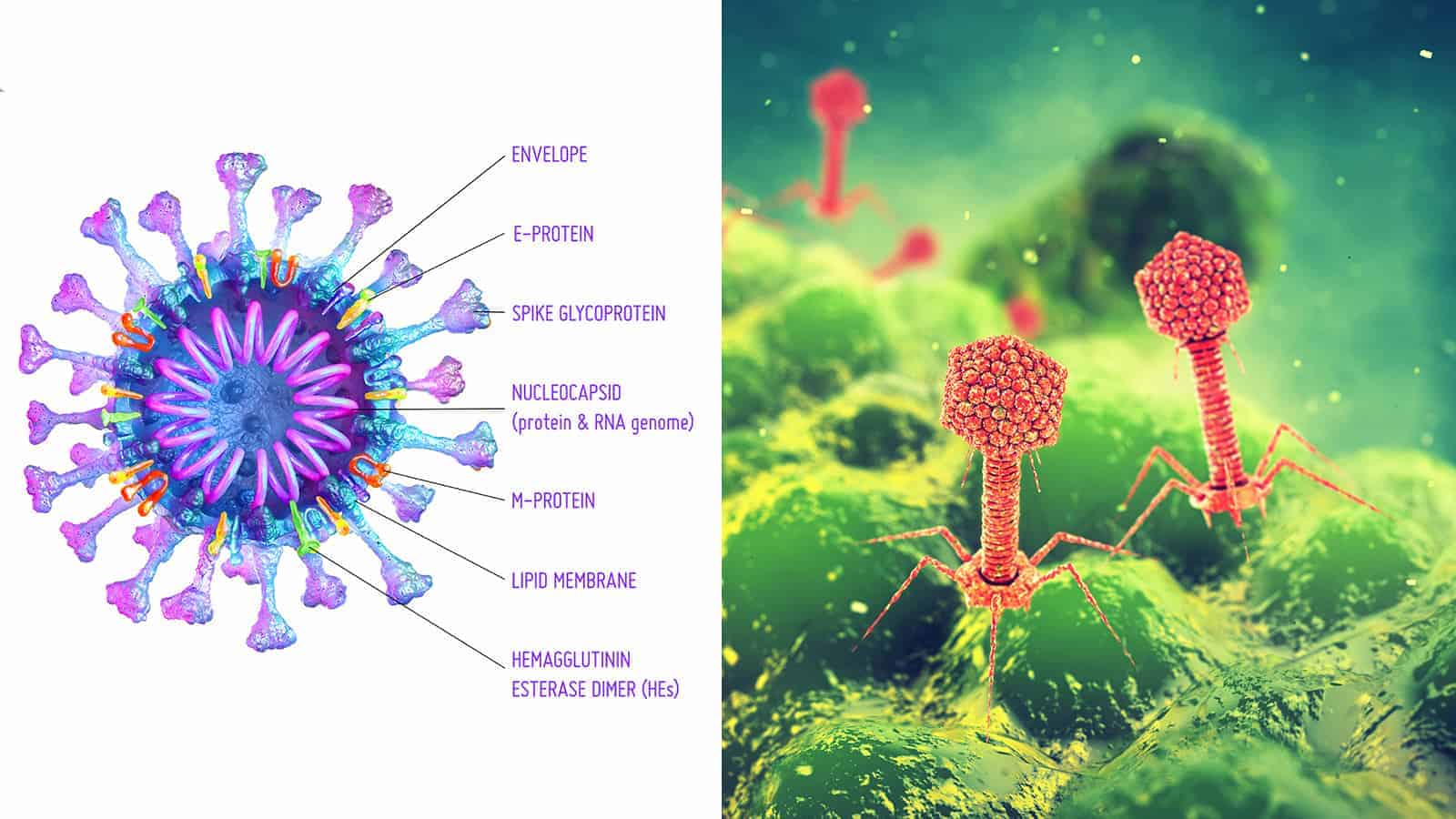For the first time ever, researchers have discovered how viruses such as the cold and polio ‘package up’ their genetic code. This allows them to infect cells, but scientists hope the study may result in new drugs to combat viral infections.
The journal PLOS Pathogens published findings on January 8, 2021, performed by a research team from the Universities of Leeds and York.
Viruses spread when one cell becomes infected, and the virus copies its genetic material to other cells. This intricate process involves the creation of something called virions, or infectious copies of the virus. Each virion consists of a protein shell that carries a total copy of the viral genetic code. After virions form, they can spread to other cells and cause an infection in humans.
Scientists, until now, didn’t know exactly what made viruses contagious, or how they “packaged” their genetic material. This groundbreaking study may lead to further research on how to stop viruses in humans.
Professor Peter Stockley, former Director of the Astbury Centre for Structural Molecular Biology at Leeds and partial supervisor of the research, said, “This study is extremely important because of the way it shifts our thinking about how we can control some viral diseases. If we can disrupt the mechanism of virion formation, then there is the potential to stop an infection in its tracks.”
“Our analysis suggests that the molecular features that control the process of virion formation are genetically conserved, meaning they do not mutate easily — reducing the risk that the virus could change and make any new drugs ineffective.”
Professor Reidun Twarock from York also supervised the study. Experts from the fields of mathematical biology, electron microscopy, and molecular biology took part in the research.
Researchers study the enterovirus to gather more clues about viruses
The research largely centered around a bovine virus called Enterovirus-E, which doesn’t cause infections in humans. However, scientists have found that it generally mimics the poliovirus, a dangerous virus that causes polio. This virus prompted the World Health Organization to begin a virus eradication initiative in hopes of curbing the disease. The enterovirus includes viruses such as the rhinovirus, which causes the common cold.This study analyzes the role of RNA packaging signals, which are short regions of the RNA molecule. Along with proteins from the virus’ casing, RNA signals ensure accurate, efficient creation of virions. Using both molecular and mathematical biology, researchers determined probable sites on the RNA molecule which may act as packaging signals. They used advanced electron microscopes at the Astbury Biostructure Laboratory at the University of Leeds to observe this process.
This marks the first time in history that scientists could visualize how genetic codes operate in a virus of this kind.
Professor Twarock added: “Understanding in detail how this process works, and the fact that it appears conserved in an entire family of viral pathogens will enable the pharmaceutical industry to develop anti-viral agents that can block these key interactions and prevent disease.”
While this research could prompt the development of better treatments for viruses, more studies are certainly needed. However, scientists have begun research on another technique that could prevent viruses as well. First discovered in the late 1990s, scientists finally understood how it works back in 2007. Called CRISPR, this involves eliminating faulty DNA sequences that recognize and respond to illnesses.
How CRISPR can prevent viruses
CRISPR involves gene editing or removing a certain code in our DNA that causes it to malfunction. Scientists then replace the faulty DNA with an intact version, which eliminates the process that leads to illness. The acronym CRISPR stands for Clustered Regularly Interspaced Short Palindromic Repeats. This term describes a family of nucleic acid sequences that scientists first discovered in bacteria in the 1990s.
They found that the bacteria contained copies of virus genes that they had mysteriously stolen from viruses. Researchers wanted to know how and why this happened, but they didn’t get their answer until 2007. Basically, they found out that the CRISPR enzymes protected bacteria cells against infection. So, if a virus attempted to infect the bacteria, the CRISPR cells intuitively found the nucleic acid sequences embedded in the code. It then eliminated potential deadly viruses found within the CRISPR sequences.
Since researchers discovered how proteins within bacteria could break down viruses, they realized the potential for human application. Scientists figured that if they could edit the genes which caused viruses to infect humans, they could potentially eradicate the illness altogether. They use a protein called Cas9 along with the CRISPR technology to find codes that cause the immune system to malfunction. Then, they cut out this gene in order to remove it or replace it with a new sequence.
While this groundbreaking technology could serve as a powerful tool to get viruses under control, some people remain skeptical. Controversies about the ethics of gene editing have sparked debates among scientists over the years, and more research is needed. However, it’s reassuring that some potential solutions have been found in regards to eliminating viruses.
Natural ways to ward off viruses
While these tips may not guarantee you won’t get sick, having a strong immune system can lower your chances of catching a virus.
- Get plenty of sleep
- Eat whole, fresh foods like fruits and veggies
- Get some sunlight each day, for at least 20 minutes
- Exercise 3-5 days per week, doing moderate to intense workouts
- Keep your stress low with yoga or meditation
Final thoughts: scientists have discovered what makes viruses so contagious
The molecular biology behind viruses is complex and not easily understood by most of us. In simple terms, viruses have a certain way of packing their genetic material in order to infect cells. However, scientists believe they’ve found a way to target areas of RNA strands that may house these packaging signals. With this knowledge, researchers foresee improved antiviral remedies coming to the market in the future.
In addition to this study, previous research found that gene editing could help eliminate viruses. However, scientists must conduct more research needs in both of these fields before we see more advancements.
















 Community
Community

